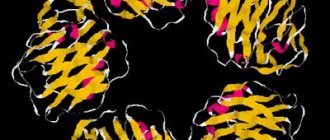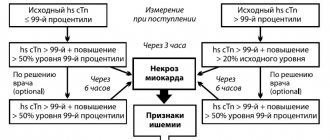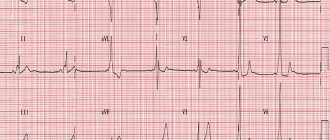Hepatitis B
is one of the most common viral liver diseases. The pathogen is transmitted in several ways: through contact with bile, blood, urine, saliva. Hepatitis of this type most often develops without symptoms: the first signs of the disease become noticeable only when complications occur. The death of functional liver cells is the cause of the development of acute liver failure. If treatment is started promptly, the body will begin to produce antibodies to hepatitis B.
Overview of Hepatitis B
Hepatitis B virus (HBV) is a complex DNA-containing organism coated with a protein coat. It is called HBsAg. Group B hepatitis can be acute or chronic. The difference lies in the course of the disease, the degree of symptoms manifested and the rate of progression.
- Acute stage.
Severe symptoms are observed in only 20% of infected people. The duration of the acute phase can reach up to six months. The symptoms of such hepatitis have much in common with colds: the patient loses appetite, suffers from cough, high fever, aching bones and joints, runny nose, and discomfort in the right hypochondrium. If treatment is delayed, the patient will fall into a coma and die; - Chronic stage.
If it occurs not as a consequence of the acute phase, but for another reason, it will be impossible to determine the beginning of its development. Symptoms of the disease are quite mild. Most often, children whose mothers were carriers of the virus suffer from chronic hepatitis. Or people who have had the antigen in their blood for more than 6 months.
References
- Ivashkin, V.T., Mayevskaya, M.V., Pavlov, Ch.S. and others. Clinical recommendations of the Russian Society for the Study of the Liver and the Russian Gastroenterological Association for the treatment of complications of liver cirrhosis. - Russian Journal of Gastroenterology, Hepatology, Coloproctology, 2021. - V. 26(4). — P. 71-102.
- Schwarz, W., Heidi, M., Nancy, E. False positive hepatitis B surface antigen test caused by hepatitis B vaccine, The Pediatric Infectious Disease Journal, 2001. - Vol. 8(2). — P. 189-193.
- Tripathi, N., Mousa, O. Hepatitis B. - In: StatPearls, 2020.
- Anjum, Q. False positive Hepatitis B Surface Antigen due to recent vaccination. - IntJHealthSci (Qassim), 2014. - Vol. 8(2). — P. 189-193.
Superficial (Australian) and markers for it
This antigen is a component of the hepatitis B virus, its outer shell. It helps the pathogen to latch onto gland cells and penetrate into it, which contributes to the rapid progression of the disease.
In addition, thanks to the shell, the virus survives in the body: it becomes its protection against antibodies. The shell tolerates temperature fluctuations well and is resistant to alkalis and acids. The antigen begins to be produced during exacerbations of the disease. As soon as the incubation period ends, its concentration will reach its maximum.
To detect antibodies to the surface antigen of the hepatitis B virus, the Anti-HBs marker is used. A positive reaction indicates that the person is infected.
anti-HBs, antibodies
Quantitative determination in the blood of specific protective post-infectious or post-vaccination antibodies against viral hepatitis B.
Synonyms Russian
Total antibodies to the surface antigen of the hepatitis B virus, anti-HBs a/t.
English synonyms
Antibodies to Hepatitis B Surface Antigen, Anti-HBs, Total, HBsAb, IgG, IgM, Hepatitis Bs Antibodies, Hepatitis B Surface Antibody.
Research method
Chemiluminescent immunoassay.
Units
mIU/ml (international milliunit per milliliter).
What biomaterial can be used for research?
Venous blood.
How to properly prepare for research?
Do not smoke for 30 minutes before donating blood.
General information about the study
Hepatitis B virus (HBV) is an infectious liver disease caused by the DNA-containing hepatitis B virus (HBV). Among all the causes of acute hepatitis and chronic viral infection, the hepatitis B virus is considered one of the most common in the world. The actual number of infected people is unknown, since many people have an infection without significant clinical symptoms and do not seek medical help. The virus is often detected during preventive laboratory tests. According to rough estimates, about 350 million people in the world are affected by the hepatitis B virus and 620 thousand die from its consequences every year.
The source of infection is a patient with HBV or a virus carrier. HBV is transmitted through blood and other body fluids. You can become infected through unprotected sexual contact, through the use of unsterile syringes, through blood transfusions and organ transplants, in addition, the infection can pass from mother to child during or after childbirth (through cracks in the nipples). The risk group includes medical workers who are likely to come into contact with the patient's blood, patients on hemodialysis, injection drug users, people with numerous unprotected sexual relations, and children born to mothers with HBV.
The incubation period of the disease ranges from 4 weeks to 6 months. Viral hepatitis B can occur both in the form of mild forms, lasting several weeks, and in the form of a chronic infection with a long-term course. The main symptoms of hepatitis: jaundice of the skin, fever, nausea, fatigue, in tests - signs of impaired liver function and specific antigens of the hepatitis B virus. An acute disease can occur quickly, be fatal, develop into a chronic infection or end with a complete recovery. It is believed that after suffering from HBV, stable immunity is formed. Chronic viral hepatitis B is associated with the development of cirrhosis and liver cancer.
There are several tests to diagnose current or past hepatitis B. Viral antigens and antibodies are used to detect carriage, acute or chronic infection with or without symptoms, while monitoring chronic infection.
The virus has a complex structure. The main envelope antigen is HBsAg, the surface antigen of the virus. There are biochemical and physicochemical features of HBsAg that allow it to be divided into several subtypes. Each subtype produces its own specific antibodies. Different antigen subtypes are found in different regions of the world.
Anti-HBs antibodies begin to appear in the blood 4-12 weeks after infection, but immediately bind to HBsAg, so they can be detected in detectable quantities only after the disappearance of HBsAg. The period between the disappearance of the antigen and the appearance of antibodies (the “window” period, or “serological gap”) can range from 1 week to several months. Antibody titers rise slowly, reaching a maximum after 6-12 months, and remain in large quantities for more than 5 years. Some people who recover have antibodies in their blood for many years (sometimes for life).
Anti-HBs are also produced by exposure to viral antigenic material during HBV vaccination and indicate an effective immune response to the vaccine. But post-vaccination antibodies do not remain in the blood for as long as post-infection antibodies. Anti-HBs determination is used to decide whether vaccination is advisable. For example, if the test is positive, a vaccine is not required, because specific immunity already exists.
What is the research used for?
- For monitoring chronic hepatitis B (prescribed in conjunction with the determination of other antigens and antibodies to the hepatitis B virus).
- To determine the history of viral hepatitis B and the development of post-infectious immunity.
- To assess the effectiveness of vaccination and the development of post-vaccination immunity.
- To select people with risk factors for HBV infection for vaccination purposes.
- To decide on the advisability of prescribing immunoglobulin to patients at high risk of contracting viral hepatitis.
When is the study scheduled?
- Every 3-6 months when monitoring chronic viral hepatitis B and its treatment.
- If there is evidence of previous hepatitis of unknown etiology.
- When evaluating patients at high risk for HBV infection.
- When deciding whether to vaccinate against viral hepatitis B.
- Several months or years after the vaccine is administered.
What do the results mean?
Reference values
Result: negative.
Concentration: 0 - 10 mIU/ml.
Positive result
- The recovery phase after hepatitis B (in this case, HBsAg is absent in the tests).
- Effective vaccination (revaccination will be required no earlier than after 5 years).
- Infection with another subtype of hepatitis B virus (with simultaneous detection of anti-HBs and HBsAg).
Negative result
- Absence of viral hepatitis B (with negative results of other studies).
- Lack of post-vaccination immunity.
- Viral hepatitis B in the incubation, acute or chronic period (with positive test results for other antigens and antibodies).
Questionable result
- Specific antibodies are present in the blood in small quantities (vaccination may be delayed for a year).
- It is recommended to repeat the analysis after some time (depending on the clinical situation and the doctor’s decision).
What can influence the result?
In patients who have received a transfusion of blood or plasma components, a false-positive result is likely.
Important Notes
The presence of anti-HBs antibodies is not an absolute indicator of complete recovery from viral hepatitis B and full protection from re-infection. Given the presence of different serological subtypes of hepatitis B, there is a possibility of the presence in the blood of antibodies to surface antigens of one type and the actual infection of the body with the hepatitis B virus of another subtype. In such patients, antibodies to HBs and HBs antigen can be detected in the blood simultaneously.
Also recommended
- HBsAg
- anti-HBc, IgM
- anti-HBc, antibodies
- HBeAg
- anti-HBe, antibodies
- HBV, DNA [real-time PCR]
- HBV, DNA quantitative [real-time PCR]
- anti-HDV, antibodies
- Anti-HCV, antibodies, ELISA
- Gamma-glutamyl transpeptidase (gamma-GT)
- Alanine aminotransferase (ALT)
- Aspartate aminotransferase (AST)
- Total alkaline phosphatase
- Serum albumin
- Total bilirubin
- Total cholesterol
- Thrombin time
- Fibrinogen
Who orders the study?
Infectious disease specialist, hepatologist, gastroenterologist, therapist, general practitioner, surgeon, immunologist, hematologist, obstetrician-gynecologist.
Literature
- Harrison's Principles of Internal Medicine. 16th ed. NY: McGraw-Hill; 2005: 1822-1855.
- Vozianova Zh.I. Infectious and parasitic diseases: In 3 volumes - K.: Health, 2000. - T.1.: 601-636.
Markers anti-HBe, anti-HBc IgM and anti-HBc IgG
The presence of anti-HBc IgM and anti-HBc IgG markers in the blood, detected in total, indicates the nature of the course of the disease. The first marker most often indicates an exacerbation of chronic hepatitis, rheumatic diseases, and fibromyalgia. Anti-HBc IgG often misinforms specialists by showing false test results.
The marker begins to dominate in the blood immediately after the disappearance of group M antigens. They do not protect the body, but remain in it forever. In some cases, antibodies are the only indicator of the presence of a disease pathogen in the body.
Anti-HBe confirms the spread of the virus in the body and means that the disease is severe. In pregnant patients, it can cause the development of abnormalities in the fetus.
Indications for taking an antibody test
Clinical testing for protective antibody titer is indicated:
- After contact with an infected person;
- Working in the field of medicine, education, catering;
- Leading a promiscuous sex life (ignoring contraception, frequently changing partners, having a non-traditional sexual orientation);
- After undergoing hemodialysis, the procedure of transfusion of blood and its components, transplantation of donor organs;
- Leading an antisocial lifestyle (alcohol and drug addiction);
- Tourists returning from countries in East Asia and Africa;
- Those who have served a prison sentence.
Absolutely anyone can get hepatitis B - man, woman, child. If even minor manifestations of the disease appear, you should immediately consult a doctor. Thanks to a special test, hepatitis B can be detected at an early stage. If the pathology is detected on time, the chances of a full recovery will be quite high. However, doctors say that the most effective measure to prevent hepatitis B is immunization.
If the procedure is carried out correctly, the body’s defenses can be activated at the right time. But remember: before vaccination you must take a reference test for hepatitis B.
Complexes with this research
Entry into IVF Examination when a woman enters the IVF procedure RUR 23,020 Composition
Women's check-up No. 1 38 studies for an annual preventive examination RUR 19,290 Composition
Male check-up No. 1 39 studies for annual preventive examination RUR 18,570 Composition
IN OTHER COMPLEXES
- Preparation for IVF for a man 6,060 RUR
- Male infertility. Extended examination RUB 29,030
- Future dad 8,460 RUR
- Expanded hospital complex 7,700 RUR
- Examination during pregnancy. 1st trimester 16,690 RUR
Process of taking material
Clinical tests to detect hepatitis B fall into two categories. PCR allows direct detection of viral pathology. Assess the interaction of antigens and antibodies - serological analysis. In addition, to obtain more accurate information about the condition of the liver, the patient is referred for a biochemical blood test, biopsy, ultrasound and elastometry.
To conduct quantitative and qualitative studies for antibodies, blood is used from a vein, which is located in the crook of the arm.
First, the injection site is treated with an alcohol solution, then the forearm is tied with a tourniquet. Next, the needle is inserted into the vein and the liquid begins to flow into the test tube. The process of collecting blood from minor patients has some peculiarities. The biological material taken from the child is placed on a special glass by a laboratory assistant and checked for the ratio of antibodies and antigens.
Anyone diagnosed with chronic hepatitis and nephrotic syndrome should undergo such tests. Results within the normal range indicate an erroneous suspicion of hepatitis B.
If genetic material of the pathogen is detected in the patient’s blood, he will be prescribed a course of therapy. But it is worth remembering that positive results can be obtained even in the presence of immunity. It is impossible to become infected from such a person. In case of a controversial situation, the patient will be re-sent for screening, which will be carried out under the strict supervision of a specialist.









